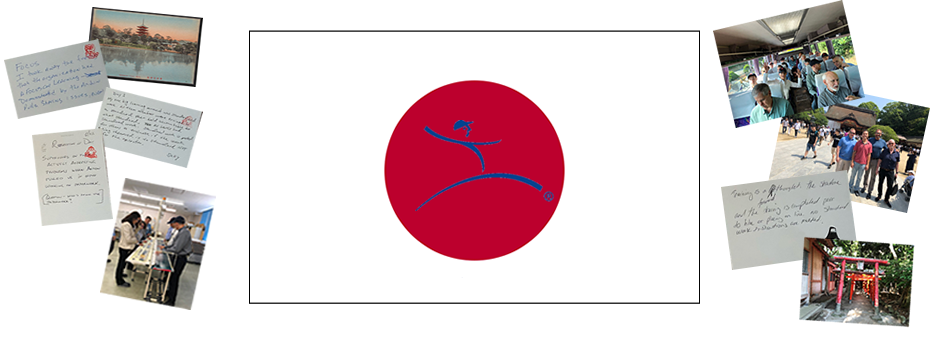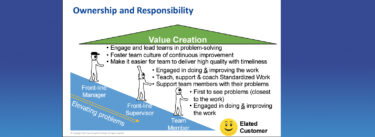Today we stepped outside of Toyota Motor Kyushu (TMK) to visit two companies: Sanmatsu and Toyota Boshoku. The latter supplies seats to TMK, while the former is a member of TMK’s TPS study group. This study group is a consortium of companies outside of Toyota’s supply chain that receives free coaching from TMK kaizen instructors. This is one way Toyota fulfills a corporate mission to serve society.
Sanmatsu joined the TPS study group in January 2017. The CEO repeatedly distinguished between “kaizen” and “TPS kaizen”. The company had been doing plain kaizen for over two decades. According to him, plain kaizen refers to improvement without any direction. Employees implemented ideas as they had them regardless of their contribution to solving the company’s problems. “TPS kaizen”, on the other hand, refers to improvement that directly addresses a corporate problem. A critical part of TMK’s coaching has been instruction on how to identify problems. And once a problem has been identified, how to harness the creativity of employees to solve the problem.
TPS kaizen begins with a question: “What problem are you trying to solve?” Once a company has identified the problem, it can begin to engage its employees in solving it through improving the work. And by improving the work, a company develops its people.
It’s a virtuous cycle. But for it to be effective, a question must first be answered: what problem are you trying to solve?
Here are some lessons captured on the postcards from our learners (and displayed in full in the slides above):
“You don’t have to be a crazy serious hardass to have a culture of continuous improvement.”
“Improving the work is the work of everyone! Small incentives because we don’t want a system to just manage improvements.”
“For the most part, these companies are not jumping to big, expensive solutions but rather they focus on solving simple, small problems; over and over and over.”
“To sustain a culture fostered by lean thinking requires improving the work to the most basic level of thinking.”
“TPS kaizen vs kaizen means using a theme, purpose, problem to solve; and using standardized work charts to find objective facts about process to kaizen/improve.”
–Matt Savas





